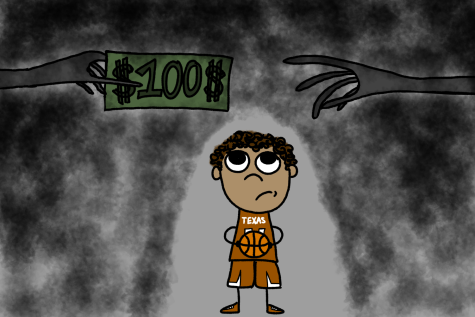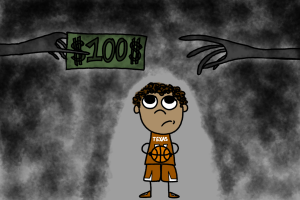Memories of a Mexican boy from El Paso: first impressions of UT during the 1960s
February 17, 2023
Editor’s note: This column was submitted by a member of the UT community.
As a Mexican boy from El Paso, I had never lived in an environment where white people outnumbered Chicanos. I had experienced some racial discrimination, but because I was one of the top students in school, I rarely saw overt discrimination directed at me. When I began my studies in 1965 at the University of Texas, this would change. I saw how people of color were told by some white people that they were not American enough.
When I was in college, I found a place to live near campus at the Whitis Co-Operative on Whitis Avenue. It was a place for about 30 male students to sleep and eat. Everyone had to help with the maintenance and cleaning of the co-op, and the cooking of the meals.
After two weeks of this organized chaos, I decided to leave. I was in luck because there was a boarding house on the same street as the co-op. I could not get used to sleeping in a room with so many guys that close together.
The co-op and several run-down boarding houses, one of which I moved into, took up most of the block north of 27th. Whitis needed paving, and there was no sidewalk. Each morning one could observe students walking up Whitis and eventually crossing 27th Street to reach campus.
At the intersection of 27th and Whitis, there were three buildings which, to me, represented the rigid white and economic class structure at UT during the 1960s: the mainly all-white Phi Gamma Delta fraternity house; the Scottish Rite Dormitory for the daughters of affluent parents; and the venerable All Saints Episcopal Chapel.
These three institutions in the 1960s represented the aristocracy of UT, the elite white upper class, in contrast to the “masses”, who lived virtually one block away from these three established institutions.
My first days at the UT began each morning with a guy I had met at the Co-Op. Walking up Whitis Avenue each morning with Bob to go to my pharmacy classes was made easier because he showed me the ropes during my first semester.
Here is a white boy from a small town in Texas, wearing his cowboy boots, cowboy shirt and Wrangler jeans, being nice and friendly to a Mexican boy from El Paso with his new slacks, a white shirt and tie. My first class in the morning was with the former pharmacy dean, and he demanded that pharmacy students act and look like professionals, especially with the clothes that they wear.
After spending long hours at the undergraduate library – now the FAC, next to the Union – I returned to the Co-Op late at night, crossing 27th to reach the other side of Whitis. I often heard catcalls and taunts from frat boys yelling at me from their bedroom windows on the second story of the house saying “go back home where you came from.” Almost sixty years later, it seems like these unoriginal insults remain.
While I was at UT, I had a kitchen job at an expensive dorm for girls. I saw how some of these mostly white girls reacted to events occurring around 1968, such as protests against the Vietnam war, civil rights demonstrations for Black people and major demonstrations against police brutality.
One evening in early June, I saw the news of RFK’s assassination in the dorm lounge. Several of the girls were clapping and cheering the announcement of his death.
When I started out at as a Mexican student at the University of Texas in the 1960s, I did not know what to expect. The simple act of crossing 27th Street each day to attend classes, study and work prepared me well for my future life as a professor, scientist and administrator in white America.
Acosta is Dean Emeritus of Pharmacy at the University of Cincinnati Medical Center, former Deputy Director of FDA’s National Center for Toxicological Research and Adjunct Professor of Pharmacology at UT.














